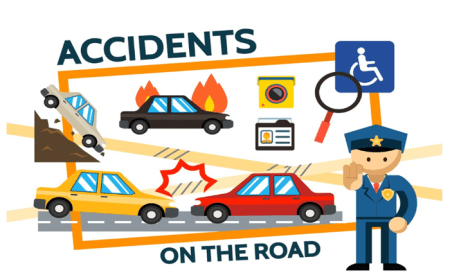In the fast-paced digital world, the headline is your first—and often only—chance to grab a reader’s attention. Crafting a headline that not only informs but also entices users to click through is an art form, and pun-based headlines stand out as some of the most effective tools for achieving this. By blending humor, clever wordplay, and relevance, pun-based headlines engage readers emotionally and intellectually, increasing click-through rates and amplifying your content’s reach.
This article provides a comprehensive guide on how to write pun-based headlines that get clicked. We’ll explore why pun headlines work so well, the types of puns you can use, and step-by-step strategies to create irresistible headlines. Whether you’re a blogger, marketer, or journalist, mastering this skill will elevate your content’s performance significantly. From playful to punny, find it all on crackuppuns.
Why Pun-Based Headlines Work
- They Spark Curiosity
Puns involve a play on words that often delivers a double meaning. This subtle linguistic twist sparks curiosity as readers want to “get” the joke or understand the wordplay, prompting them to click to satisfy their intrigue.
- They Add Humor and Personality
Humorous headlines feel approachable and human. They signal to readers that the content will be enjoyable, creating an emotional connection before the article is even opened. This sense of personality differentiates your content in a crowded feed.
- They Are Memorable
A clever pun sticks in the reader’s mind, increasing the likelihood they’ll remember your brand or content source. Memorable headlines also encourage sharing, further extending your reach.
- They Appeal to a Broad Audience
When done well, puns can be appreciated by diverse audiences due to their linguistic playfulness. This universality makes them versatile tools for wide-ranging content types.
Types of Puns for Headlines
- Homophonic Puns
These use words that sound alike but have different meanings. Example:
- “Time to ‘meat’ your new favorite recipes” (meat/meet)
- Homographic Puns
Words spelled the same but with different meanings or pronunciations. Example:
- “Read between the ‘lines’ for success” (lines as text and as limits)
- Compound Puns
Combine multiple layers of wordplay for added wit. Example:
- “Donut miss out on these sweet deals” (donut/don’t)
- Visual Puns (when combined with images)
Headlines paired with images enhance pun impact, especially on social media.
Step-by-Step Guide to Writing Pun-Based Headlines That Get Clicked
Step 1: Understand Your Content Thoroughly
Your headline must reflect your content accurately. Familiarize yourself with the key themes and messages so the pun can be relevant and meaningful.
Step 2: Identify Keywords and Core Concepts
Pinpoint important keywords or phrases around which to build your pun. For example, if writing about gardening tips, words like “bloom,” “root,” or “grow” are pun-worthy.
Step 3: Brainstorm Pun Ideas
Use a thesaurus, rhyme dictionary, or online pun generators to spark ideas. List all possible wordplays related to your topic.
Step 4: Select the Most Impactful Pun
Choose a pun that is clever yet clear. Avoid overly complex puns that might confuse readers.
Step 5: Craft the Headline
Incorporate the pun naturally while keeping the headline concise and compelling. Ensure it retains SEO value by including primary keywords where possible.
Step 6: Test for Clarity and Appeal
Read the headline aloud and ask others for feedback. It should be instantly understandable and evoke interest or amusement.
Best Practices for Pun-Based Headlines
Keep It Short and Sweet
Headlines that are too long can lose impact. Aim for around 50-60 characters to ensure readability and optimal display on search engines.
Maintain Relevance and Accuracy
Avoid clickbait. Your pun should enhance the message, not distort it. Readers appreciate humor but expect truthful previews.
Use Emotional Triggers
Pair your pun with words that evoke curiosity, urgency, or benefit to increase clicks.
Consider Your Audience
Tailor pun complexity and style to your audience demographics and preferences.
Pair with Compelling Visuals
Especially on social media, images that complement your pun-based headline can boost engagement.
Examples of Successful Pun-Based Headlines
- “Sew What? Stitch Up Your Style with These DIY Tips” (fashion blog)
- “Donut Worry, Be Happy: Sweet Treats for Every Mood” (food blog)
- “Leaf It to Us: Autumn Gardening Made Easy” (gardening guide)
- “Shell We Dance? Ocean Conservation Tips You’ll Love” (environmental article)
- “Paws and Reflect: What Your Pet Is Really Trying to Say” (pet care)
These headlines combine topic relevance with witty puns that grab attention and promise enjoyable content.
Common Mistakes to Avoid
- Overcomplicating the Pun: If the pun requires too much effort to decode, readers may skip it.
- Misleading Headlines: Clickbait puns can harm credibility if the content doesn’t deliver.
- Ignoring SEO: Ensure your headline balances creativity with search engine visibility.
- Inappropriate Tone: Not all topics suit puns—use discretion for serious or sensitive subjects.
- Excessive Punning: One clever pun per headline is sufficient; don’t overdo it.
Tools and Resources to Help Craft Pun-Based Headlines
- Pun Generators: Websites like Punsville, Pun Generator, and RhymeZone.
- Thesaurus and Rhyme Dictionaries: To find synonyms and rhymes.
- Headline Analyzers: Tools like CoSchedule Headline Analyzer to assess headline effectiveness.
- Social Media Insights: Monitor trending pun-based posts for inspiration.
Conclusion: Elevate Your Content with Click-Worthy Pun Headlines
Pun-based headlines are a powerful, creative way to capture reader attention and drive clicks. By blending humor, wordplay, and relevance, you create memorable and engaging headlines that cut through the noise of the internet. With thoughtful brainstorming, audience awareness, and adherence to best practices, your pun headlines can boost your content’s reach and impact dramatically.
Start experimenting with pun headlines today and watch your content click rates soar.







